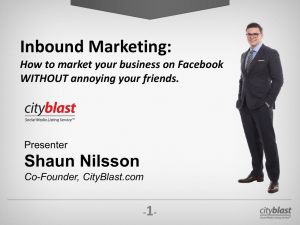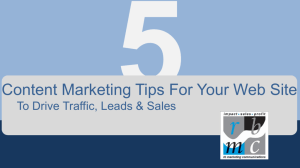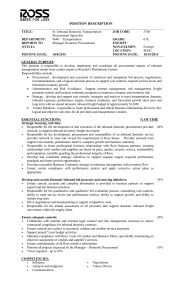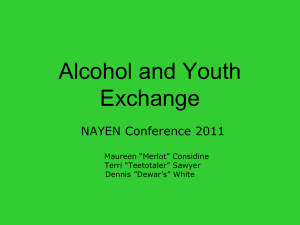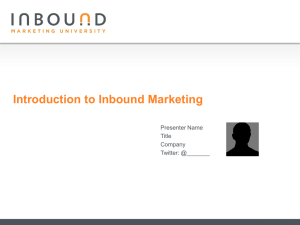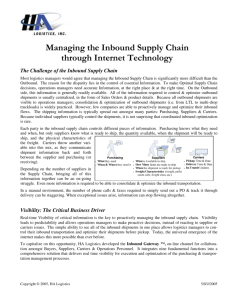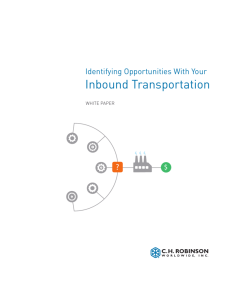College of Busines book review by James W
advertisement
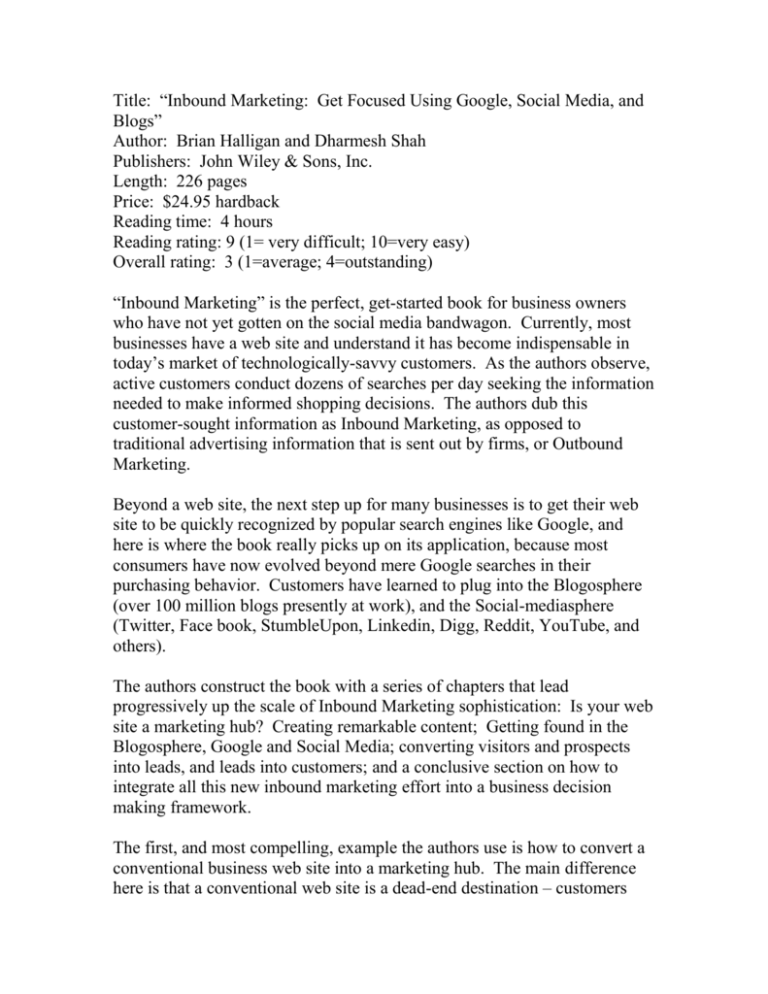
Title: “Inbound Marketing: Get Focused Using Google, Social Media, and Blogs” Author: Brian Halligan and Dharmesh Shah Publishers: John Wiley & Sons, Inc. Length: 226 pages Price: $24.95 hardback Reading time: 4 hours Reading rating: 9 (1= very difficult; 10=very easy) Overall rating: 3 (1=average; 4=outstanding) “Inbound Marketing” is the perfect, get-started book for business owners who have not yet gotten on the social media bandwagon. Currently, most businesses have a web site and understand it has become indispensable in today’s market of technologically-savvy customers. As the authors observe, active customers conduct dozens of searches per day seeking the information needed to make informed shopping decisions. The authors dub this customer-sought information as Inbound Marketing, as opposed to traditional advertising information that is sent out by firms, or Outbound Marketing. Beyond a web site, the next step up for many businesses is to get their web site to be quickly recognized by popular search engines like Google, and here is where the book really picks up on its application, because most consumers have now evolved beyond mere Google searches in their purchasing behavior. Customers have learned to plug into the Blogosphere (over 100 million blogs presently at work), and the Social-mediasphere (Twitter, Face book, StumbleUpon, Linkedin, Digg, Reddit, YouTube, and others). The authors construct the book with a series of chapters that lead progressively up the scale of Inbound Marketing sophistication: Is your web site a marketing hub? Creating remarkable content; Getting found in the Blogosphere, Google and Social Media; converting visitors and prospects into leads, and leads into customers; and a conclusive section on how to integrate all this new inbound marketing effort into a business decision making framework. The first, and most compelling, example the authors use is how to convert a conventional business web site into a marketing hub. The main difference here is that a conventional web site is a dead-end destination – customers come to the web site, but it leads them nowhere else. With a marketing hub web site design, linkages are what the web site is all about – interactive linkages with viewers and active customers, and more linkages to blogs and social media outlets. Information then flows multiple ways throughout the web site hub, and linkages become possible with many millions, instead of just thousands, of prospective customers. The authors describe a number of examples of successful inbound marketing programs in action, from the presidential campaign of Barack Obama, to the Grateful Dead, to the Whole Foods Market. Reading these success stories will convince even the most skeptical reader of the effectiveness of inbound marketing techniques, and inspire folks to get on the bandwagon. Further, the authors continue to provide exact how-to content on all of their action points, like picking keys words, using page title tags and domain names, creating Facebook business pages, building a Linkedin group, gathering followers on Twitter, getting discovered on StumbleUpon and producing attention-getting YouTube videos. The final chapters of the book are devoted to capitalizing on all this connectivity by converting all these contacts and leads into customers. Again, practical tips and guidance are offered to help a business make the transformation into gaining customers through inbound marketing. Thus, the bandwagon is rolling down the street – buy this book as a means to help you get on board! Dr. James Busbin is a marketing professor in the College of Business at Western Carolina University. He writes regularly about competitive business strategy, and has served as a consultant to a number of large firms in the medical and food manufacturing fields. For previously reviews books, visit our Web Site at www.wcu.edu/cob/.
